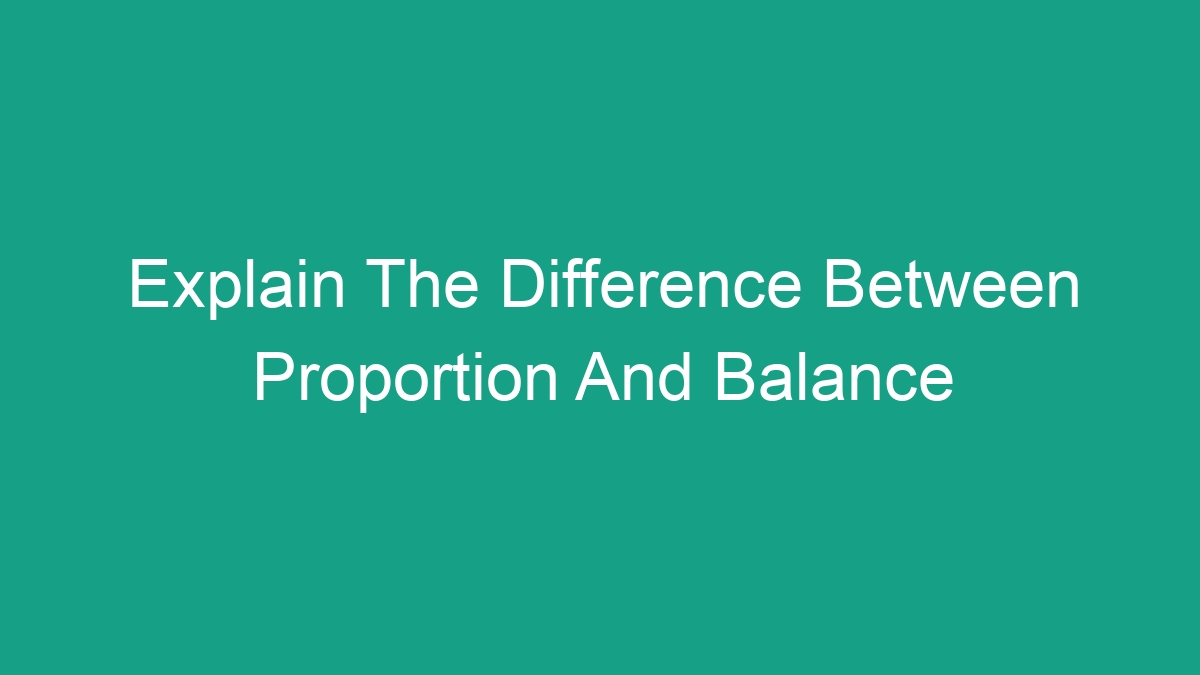
When it comes to design, whether it’s in art, architecture, or interior decorating, two crucial concepts that often come up are proportion and balance. While both terms may seem to be used interchangeably at times, they actually refer to different principles in design. In this article, we will delve into the distinctions between proportion and balance and how they play essential roles in creating aesthetically pleasing compositions.
The Difference Between Proportion and Balance
Proportion
Proportion in design refers to the comparative relationship between the elements in a composition. It involves the size, quantity, or scale of the various components within the design. Proportion is essential in creating harmony and visual appeal. When the elements are proportionate to each other, the overall design feels balanced and well-structured.
There are a few key aspects to consider when discussing proportion in design:
- The size of objects in relation to each other
- The scale of elements within the composition
- The quantity of similar elements used
Balance
Balance, on the other hand, refers to the distribution of visual weight in a design. It’s about achieving equilibrium among the elements within the composition. A well-balanced design feels stable and harmonious. There are several types of balance in design, including symmetrical balance, asymmetrical balance, and radial balance. Each type creates a different visual effect and can be used to convey different feelings or messages within the design.
When discussing balance in design, it’s important to consider:
- The arrangement of elements within the composition
- The visual weight of each element (color, size, texture, etc.)
- The feeling of stability or tension created by the arrangement
Examples of Proportion and Balance in Design
To better understand the difference between proportion and balance, let’s look at some examples in various design disciplines:
Art
In a painting, the proportion of objects and figures within the composition contributes to the overall harmony of the piece. When the sizes and quantities of elements are well-proportioned, the painting feels cohesive and visually appealing. Additionally, the balance of elements, whether achieved through symmetrical or asymmetrical arrangements, adds to the overall visual impact of the artwork.
Architecture
In architecture, proportion plays a crucial role in the design of buildings and spaces. The relationship between different architectural elements, such as windows, doors, and columns, is essential to the overall aesthetic of a structure. Additionally, achieving balance in the facade and layout of a building is vital in creating a sense of stability and visual appeal.
Interior Design
When it comes to interior design, proportion is key in selecting furniture and decor that complement the scale of a room. Proper proportion ensures that the elements within a space relate well to each other and create a cohesive environment. Furthermore, achieving balance in the arrangement of furniture and accessories helps to create a harmonious and inviting space.
Importance of Proportion and Balance in Design
The principles of proportion and balance are crucial in design for several reasons:
- They contribute to the overall visual appeal of a composition
- They create a sense of harmony and cohesion within the design
- They can convey specific messages or emotions through the arrangement of elements
- They impact the functionality and usability of a design, particularly in architecture and interior design
Understanding and applying proportion and balance in design is essential for creating successful and impactful compositions across various disciplines.
Conclusion
In summary, while proportion and balance are both fundamental principles in design, they refer to different aspects of composition. Proportion deals with the size, quantity, and scale of elements, while balance focuses on the distribution of visual weight within a design. Both concepts are essential for creating visually appealing, harmonious, and functional designs across art, architecture, and interior decorating. By understanding the distinctions between proportion and balance, designers can effectively utilize these principles to enhance their creative work.


